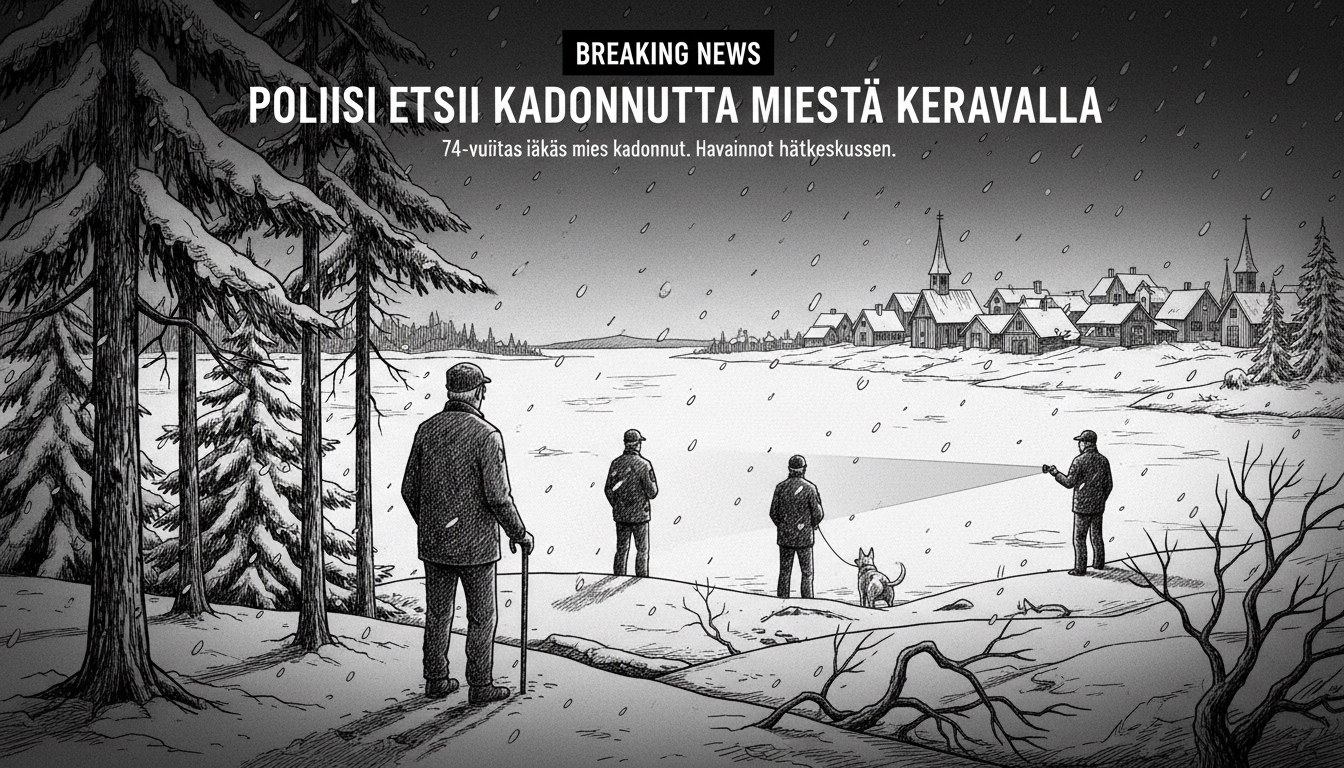Finnish authorities have launched an urgent search for a 74-year-old man who disappeared from Kerava on Wednesday afternoon. The man went missing from Metsolantie street in the suburban community north of Helsinki.
The missing individual has blond hair and stands approximately 180 centimeters tall with an average build. He was last seen wearing a black jacket, dark trousers, and a green baseball cap. Police note he was carrying a distinctive tube bag featuring black, pink, and blue colors with a yellow logo on the side.
Authorities are urging anyone with information to immediately contact emergency services at 112. The public can provide tips about potential sightings or any relevant information that might assist in locating the missing senior.
This disappearance highlights Finland's comprehensive approach to missing persons cases, particularly involving vulnerable elderly individuals. Finnish police typically mobilize quickly in such situations, coordinating with local volunteers and utilizing public alert systems.
Elderly missing persons cases often present unique challenges in Nordic countries. Finland's extensive forested areas and harsh weather conditions can complicate search efforts, especially when temperatures drop during autumn months. The country's advanced emergency response systems and high public awareness typically contribute to successful resolutions in such cases.
Kerava, located about 30 kilometers north of Helsinki, is part of the capital region with approximately 37,000 residents. The community features both urban residential areas and surrounding forested regions, creating diverse search environments for emergency personnel.
Finnish missing persons protocols involve multiple agencies working in coordination. Police work alongside rescue departments and often enlist help from volunteer organizations. The country's comprehensive social welfare system also provides support networks that can assist in such situations.
International readers should note that Finland maintains one of Europe's most effective emergency response systems. The 112 emergency number connects callers to coordinated services that can dispatch appropriate resources based on each situation's specific needs.
What happens next in this search operation? Police will likely expand their search perimeter as time passes. They may deploy additional resources including canine units, drones, and volunteer search parties if initial efforts prove unsuccessful. The man's family and local community organizations typically join these efforts, demonstrating Finland's strong social cohesion in times of crisis.

